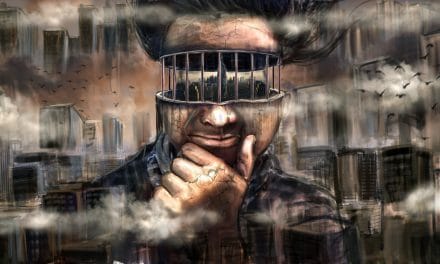The world of Physics saw a quantum revolution that quite literally saw a quantum leap, breaking asunder centuries old ideas of reality and establishing new ones. From the Annus Mirabilis 1905 to the middle of the twentieth century, luminaries such as Planck, Einstein, de Broglie, Compton, Bohr, and many others strove to understand different aspects of the realm of quantum physics. There were some aspects that defied intuition and visualization, especially given that the quantum picture was fundamentally at variance from the classical picture, be it the probabilistic dynamics being seen therein to ideas such as `spooky action at a distance’ and the whole debate on what is real and whether reality depends on our measurements. One major concept that came to the fore in those early years was that of the wave-particle duality. Wave–particle duality describes the reality of every quantum entity being able to be described as either a wave or a particle. It highlights that the classical concepts of a `particle’ or `wave’ cannot completely describe the behavior of quantum entities. Albert Einstein once famously wrote:
“It seems as though we must use sometimes the one theory and sometimes the other, while at times we may use either. We are faced with a new kind of difficulty. We have two contradictory pictures of reality; separately neither of them fully explains the phenomena of light, but together they do.”
Neils Bohr saw this duality and paradox as a metaphysical side of nature that is fundamental. In his conceptualisation, a quantum entity can show particle-like or wave-like behaviour depending on the physical settings we are observing it in. This was substantiated by the developments over the previous two centuries while looking at light, which showed wave-like interference patterns and particle-like effects such as the Photoelectric effect depending on the kind of experiment that was being undertaken. While Bohr thought that one may have to look more closely at the principle of causality in space-time itself to understand quantum mechanics, having spoken about this at great length in the paper `On the Notions of Causality and Complementarity’, Heisenberg could still visualise causality with the introduction of the concept of second quantisation that generated the concept of fields that do exist in ordinary space-time. Although light had been discussed at great length over the nineteenth and twentieth centuries, in the context of its dual nature, it was in 1924 that Louis-Victor de Broglie formulated the de Broglie hypothesis showing that matter, that had been regarded as particulate in its composition, also had a wave-like nature. Over the years, we have seen the wave-like nature even on large objects, such as C60 fullerenes in 1999 and Tetraphenylporphyrin (H2TPP) in 2003 in the University of Vienna. Thereon, there were many explanations for this inherent duality, including the de Broglie–Bohm theory that spoke of a pilot wave associated with every entity whose particulate aspect would `ride’ the wave, thereby reconciling the two dual aspects of the entity.
While Bohmian mechanics has had proponents and critics over the years, another area of Physics that definitely had a far stronger claim to removing these ambiguities was Quantum Field Theory. The idea of a `quantum field’, which pervades all space, allows solutions to the operative equations to follow the wave equation, while the irreducible representations of the Lorentz group permitted by the field are labelled as `particle’. The first ever photograph of light as both a particle and wave was taken by scientists at the École polytechnique fédérale de Lausanne in 2015. In this experiment, a stream of electrons were shot close to a nanowire, which carried confined light that when interacting with the electrons sped up or slowed down. These changes could be tracked by ultrafast microscope and thereby one could see the standing wave that acts as a fingerprint of the wave-nature of light, while the exchange of energy between photons and electrons happened in packets (quanta) of energy, thereby showing both the wave-like and particle-like aspects of light. While the interpretation and visualization of the wave-particle duality has encompassed everything from the only-wave to only-particle to both-wave-and-particle pictures, what intrigues me the most is the possibility of the fourth: neither wave nor particle interpretation. Certain physicists have argued that quantum entities are neither particles nor waves but rather only some apparent intermediate between them. Arthur Eddington coined the name wavicle to describe entities in 1928, and there has been widespread discussion on everything from the non-physicality of a zero-dimensional mathematical point or even the un-normalisable Dirac Delta function that is used to represent particles. Conversely, the infinitely-spread out momentum states also cannot be normalized, as highlighted by Nobel Laureate Roger Penrose in his work The Road to Reality: A Complete Guide to the Laws of the Universe.
In ancient India, we have had the logical argument of the Catuṣkoṭi (चतुष्कोटि) that is an indivisible quaternity which has seen applications in various Dharmic and Buddhist traditions of logic and epistemology as well as in Pyrrhonism. In this four-cornered system of argumentation involving the systematic examination of each of the four possibilities of a proposition P: P, not P, P and not-P, neither P nor not-P. R. H. Robinson, in his work “Some Logical Aspects of Nagarjuna’s System”, speaks of Nagarjuna’s application of the fouth in this quaternary, saying that `This double refutation is called the Middle Path’. Even in the Nasadiya Sukta, we see the double refutation, in that case of existence and non-existence both, to describe the ultimate reality. The application of the double refutation in the case of the physical world, in terms of modern Physics, is seen in the case of quantum dualities. There have been conceptualized experiments in the recent past that show that light is neither a particle nor a wave, such as in Luiz Carlos Ryff’s work “Neither Particle-like nor Wave-like Behaviour of a Photon” published in Causality and Locality in Modern Physics by Springer in 1998. There have been concepts such as that of a Quanton by Mario Bunge that tries to look beyond waves and particles as well. However, the key question here is: if the wave-particle duality is actually found to be a non-duality, can we associate a third conceptual element to explain it? One may feel that this negation can be done ad infinitem, as the Madhyamaka proponents or Buddhists or even Vedantin would do, so as to finally establish that reality is beyond binaries and dualities. But since we talk of the physical sciences, one must rely on actual empirical findings and not just theorizing. After all, even String theory, arguably the most complete and mathematically consistent ‘Theory of Everything’, is not accepted as one conclusively since it still lacks experimental backing. We are reaching new frontiers in Physics, both experimentally and theoretically. Let us hope we can soon empirically establish on firm grounds the fundamental role of duality and non-duality in describing our physical reality.
Banner courtesy: Pete
















